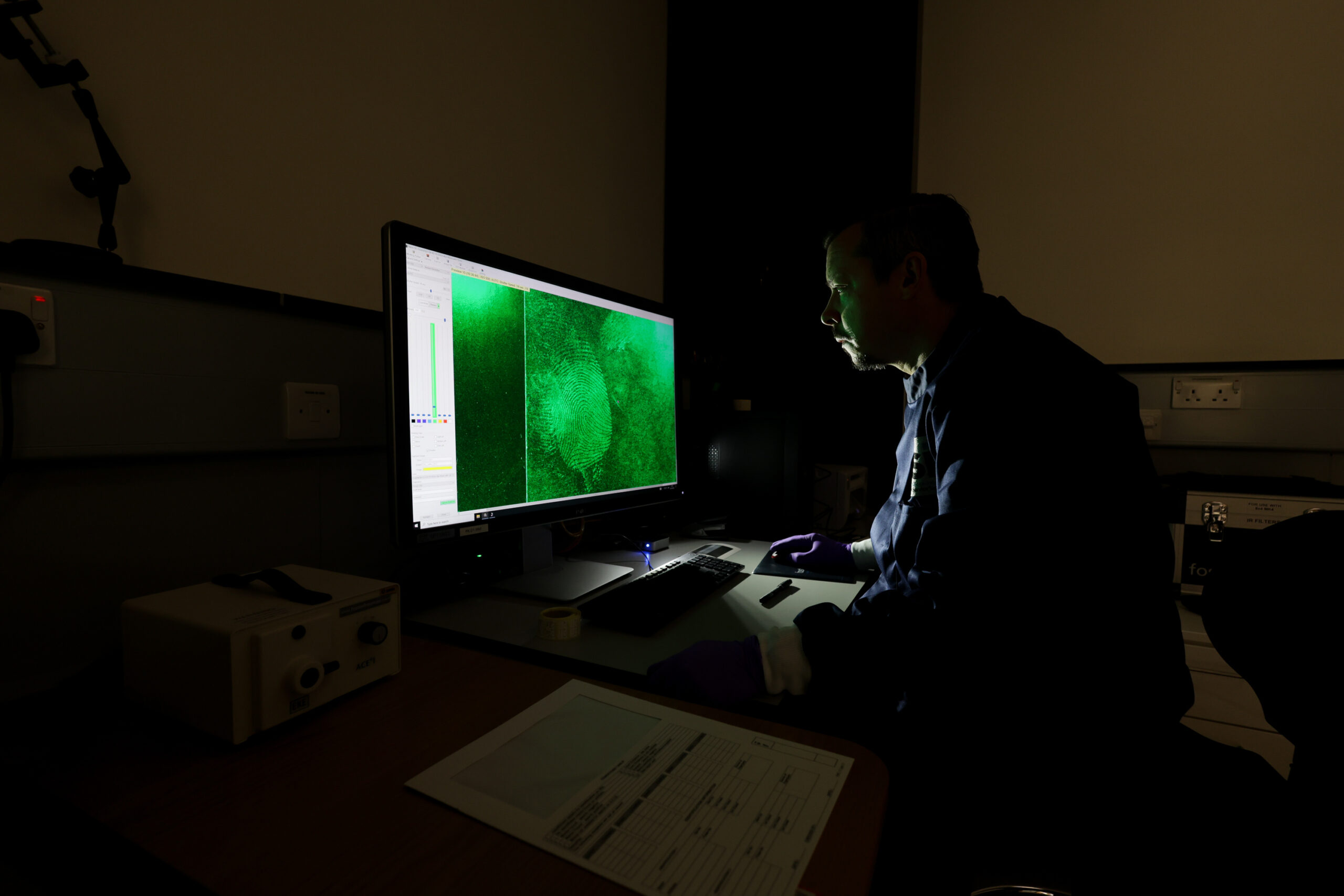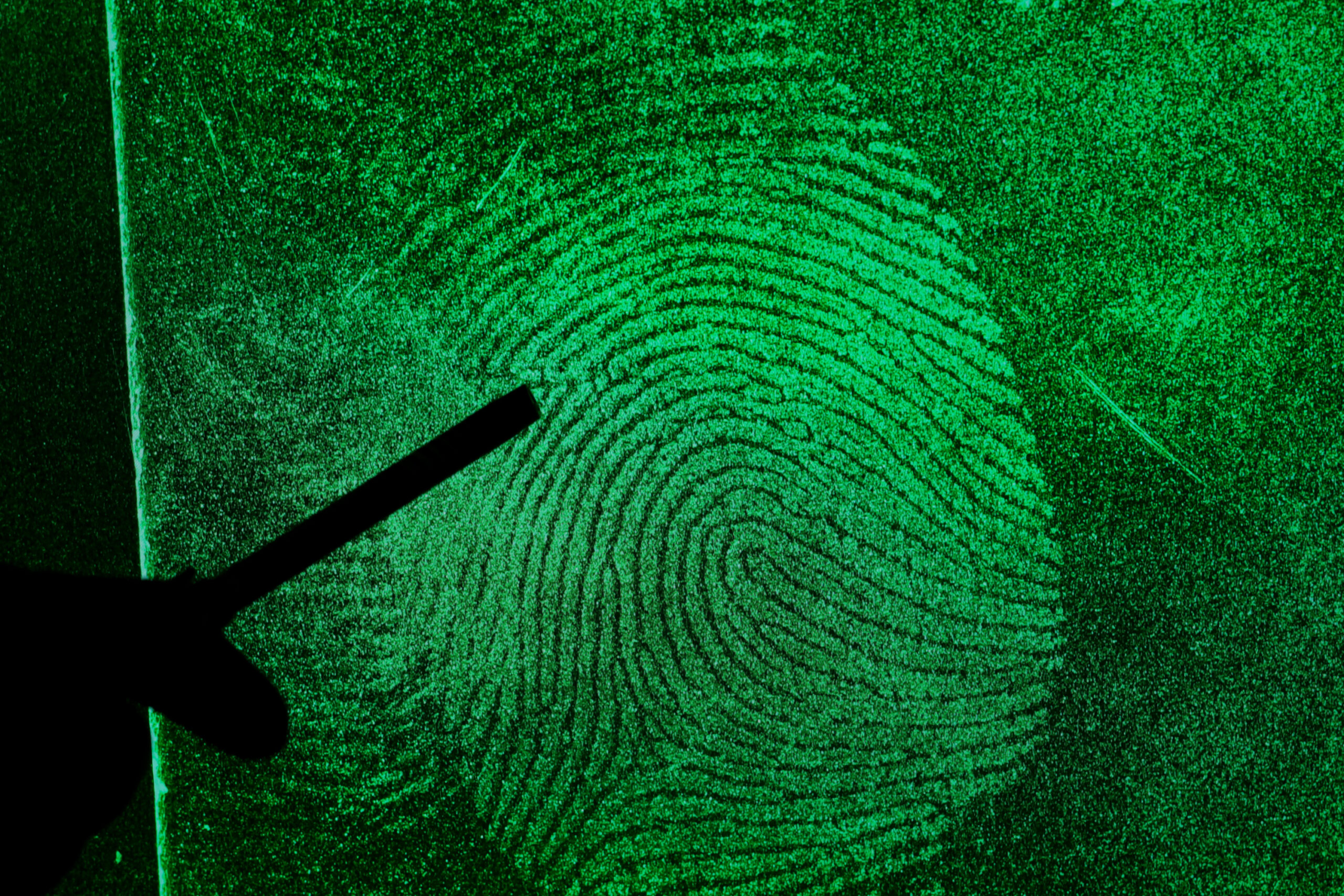Fig.1
Fingerprints


Fig.2
Fingerprints
Fingerprints have been a cornerstone of forensic science for over a century. Every person’s fingerprints are different – even identical twins who share the same DNA will have different fingerprint patterns. We constantly deposit fingermarks on objects we touch, thanks to the natural oils and sweat on our skin. Most of these fingermarks are latent, meaning they are invisible until developed or enhanced. Fingerprint evidence is highly valued because it can link a person to a crime scene or object. For example, a bloody fingermark on a weapon can directly connect a suspect to an assault, or a latent mark on a windowsill could show that a particular person touched it (implying they might have been the one who climbed through). Fingerprints are also used for the identification of cadavers, disaster victims, and for biometric security (unlocking phones, entering secure facilities).
The scientific basis for fingerprint identification lies in two fundamental ideas: (1) pattern and (2) persistence. The patterns of ridges on our fingers form before we are born and, barring scars or damage, remain the same throughout our lifetime. The ridges form recognizable patterns such as loops, whorls, and arches, but the specific details of how these ridges break, split (bifurcate), and end are what make a fingerprint characteristic. These tiny details are called minutiae – examples include ridge endings, bifurcations, dots, deltas, and islands.
Following a crime, exhibits are submitted to FSI for recovery of fingermarks, if the marks are latent then visualisation can be achieved by use of fluorescent powders, by chemical enhancement, i.e. amido black or ninhydrin staining, or by superglue fuming. The method selected for visualisation is based on the type and colour of substrate that the fingermark has been deposited on. If an individual suspected of involvement in the crime has provided their fingerprints (known as Tenprints) then the scientist will compare the recovered fingermark to the reference Tenprints. If there is no suspect in the crime then the recovered fingermark will be uploaded to the automated fingerprint identification system (AFIS).
If a match is found a manual comparison will still be conducted by a scientist for confirmatory purposes. While a fingerprint match is a powerful inclusion (it puts someone at a scene or touching an object), it also must be highlighted that the absence of prints is not proof of absence, and the presence of prints doesn’t directly tell when they were left. Thus, fingerprint evidence is often considered alongside DNA, and other trace evidence to build a full picture of the crime.
